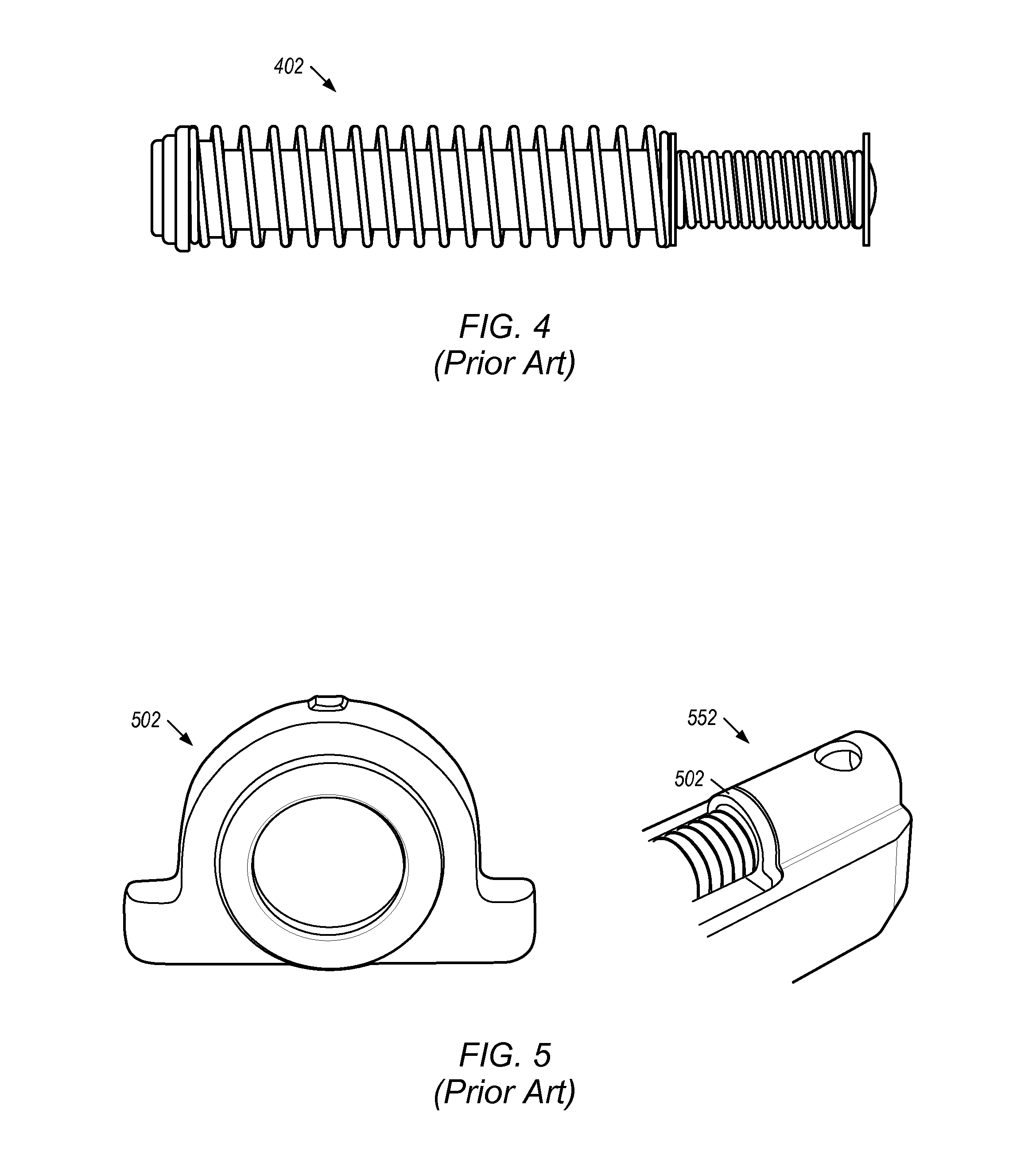Progressive gun spring recoil system with high energy rebound
a recoil system and progressive technology, applied in the field of semiautomatic gun mainspring recoil systems, can solve the problems of reducing affecting the operation of the gun, so as to improve the ease of operation, reduce the weight of the mainspring, and facilitate the basic operation of the gun.
- Summary
- Abstract
- Description
- Claims
- Application Information
AI Technical Summary
Benefits of technology
Problems solved by technology
Method used
Image
Examples
Embodiment Construction
[0059]In one set of embodiments, a progressive recoil action system may be designed and used in semiautomatic handguns to allow for the use of lighter springs suitable for basic operation of light loads, and higher energy density springs that provide a “rebound” effect to absorb any additional force. FIG. 1 shows one example of the basic components of a novel spring assembly 100 that may be used in a novel recoil action system, and includes a guide rod 102 having a front-end stop 110 and a back-end stop 112, a mainspring 104, and a stack 106 of Belleville springs 108 captured between mainspring 104 and back-end stop 112. The spring assembly 100 and configuration of the Belleville springs 108 will be described in further detail below. Overall, as shown in FIG. 1, a high-energy stack of Belleville disc springs may be used to modify the spring recoil assembly for the recoil action system. FIG. 8 illustrates the basic Belleville spring 802, and a side view 820 illustrating the character...
PUM
 Login to View More
Login to View More Abstract
Description
Claims
Application Information
 Login to View More
Login to View More - R&D
- Intellectual Property
- Life Sciences
- Materials
- Tech Scout
- Unparalleled Data Quality
- Higher Quality Content
- 60% Fewer Hallucinations
Browse by: Latest US Patents, China's latest patents, Technical Efficacy Thesaurus, Application Domain, Technology Topic, Popular Technical Reports.
© 2025 PatSnap. All rights reserved.Legal|Privacy policy|Modern Slavery Act Transparency Statement|Sitemap|About US| Contact US: help@patsnap.com



